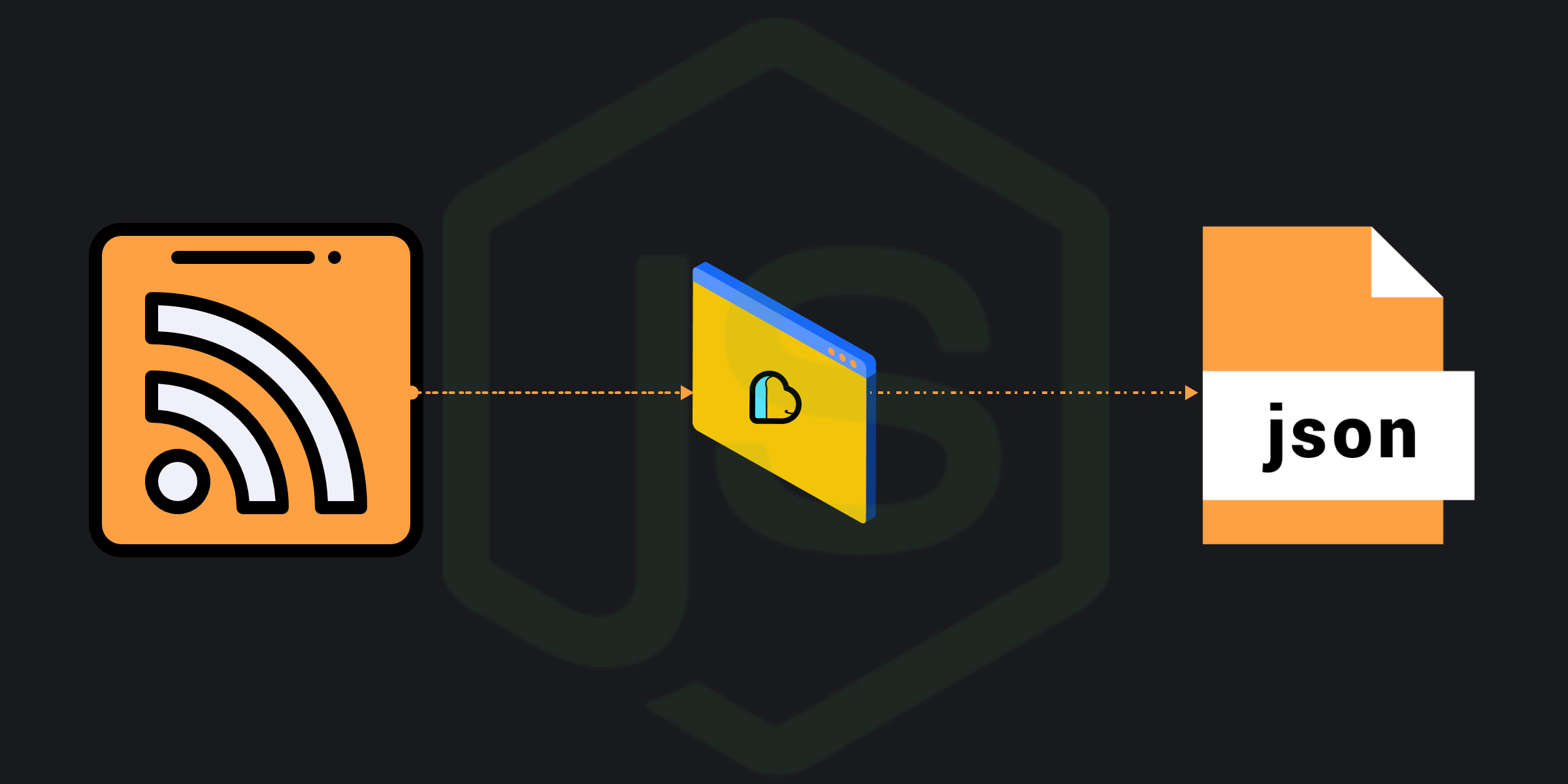Tutorials
RSS to JSON: Use case and Integration using NodeJS
Convert RSS feeds to JSON with ApyHub’s API in NodeJS. Step-by-step guide for developers to integrate dynamic content and automate feed workflows—start building today.
SO
Sohail Pathan
Last updated on January 17, 2024
Introduction:
RSS feeds have long been a popular means of delivering content from different sources including websites, blogs, and news sites. Integrating and consuming RSS feeds can become much easier by converting them into JSON format. You can have a look here where we discussed the crucial advantages of RSS to JSON Conversion.
Now, let's explore where the RSS to JSON conversion can be utilized.
Media companies and content aggregators can significantly benefit from the process of converting RSS feeds into JSON format. RSS feeds are a common method used by news websites and blogs to distribute their content in a standardized format. This simplifies the process of collecting, curating, and displaying news or articles from multiple sources on their platforms.
Some known platforms that utilize RSS feeds are:
- Daily.dev: This developer-focused community aggregates content from various sources using RSS.
- Flipboard: A content curation and magazine app that allows users to flip through news stories from various sources.
- Feedly: An RSS feed reader that consolidates articles and media from blogs and websites.
In this post, we look at how to convert RSS feeds to JSON using ApyHub’s API and integrate RSS feeds into your applications using NodeJS in just simple steps. Let’s start 🧑💻
1. Install the required libraries:
To install all the required dependencies, run this command on the terminal of your project folder.
Once we run
npm install in the terminal, the command triggers the installation of the specified dependencies listed in the project's package.json file. The following dependencies are commonly installed.Axios: A popular HTTP client library for making HTTP requests in Node.js. It simplifies the process of sending HTTP requests and handling responses. In this case, Axios is used to make a POST request to the RSS to JSON API, sending the RSS URL.
2. Create a new Project:
The next step is to create a new file; for example, create a file convertRSSToJSON.js and add the following code to import the required libraries we installed.:
3. Define the Conversion Function:
convertRSSToJSON will encapsulate the logic for API requests. This function will convert RSS feeds to JSON, handling URL preparation and error management. We will need apy-token which you can find in the documentation.4. Invoke the conversion function
After invoking the
convertRSSToJSON() function, pass the sample .xml RSS feed URL. This function sends a request to the Convert RSS to JSON API, which returns the JSON Response. The successful conversion URL is logged to the console. If there is an error during the conversion process, it is caught and the error message is logged to the console.5. Save the file and execute the script
Save the file open your terminal, navigate to the project directory, and run the following command to execute the script:
6. Once the request is sent, the response will be returned in JSON.
And that's it! Was easy, right?
Now you can add multiple RSS feeds which simplifies the integration of diverse content sources into your applications.
Also do not forget to handle the errors in case the URL is malformed or there is no valid RSS feed accessible through the URL - in such cases the API will return appropriate errors.


